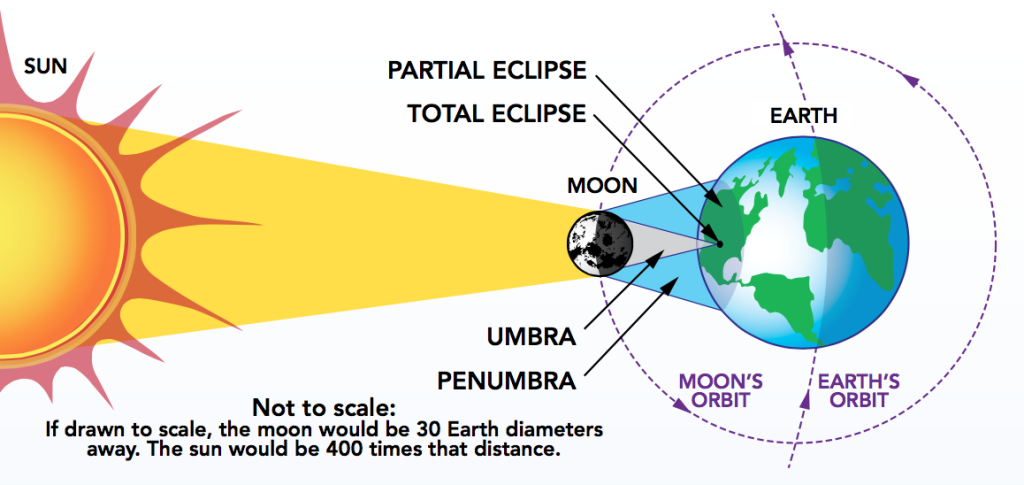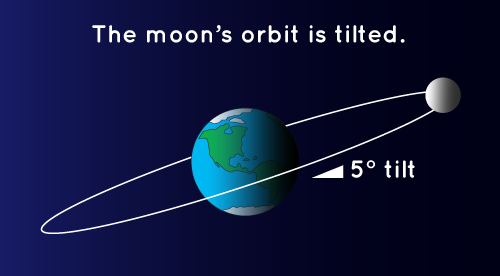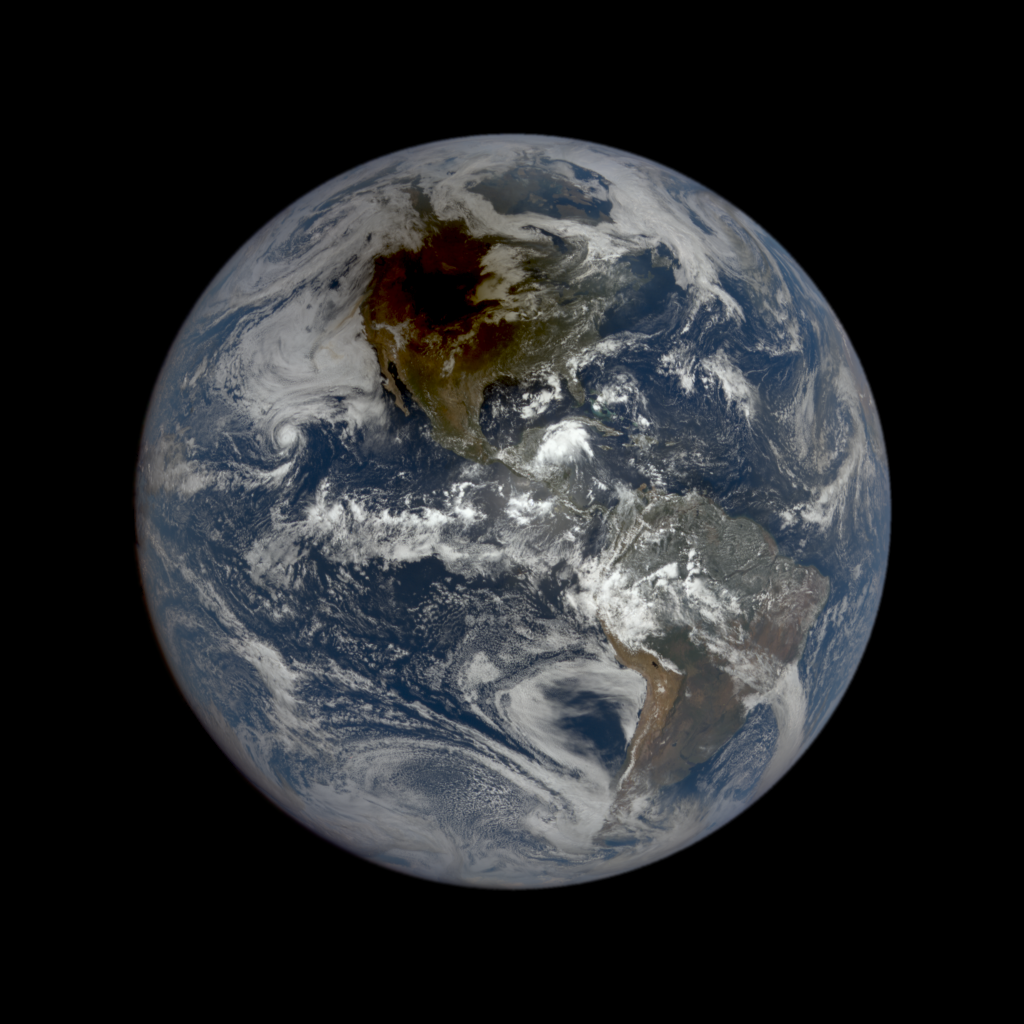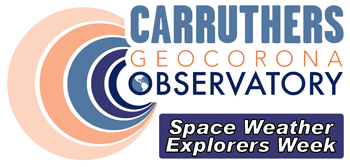Eclipse
2024 Eclipse resources from our friends at Rice University
All About Eclipses
A solar eclipse occurs when, from our perspective on Earth, the Moon moves between us and the Sun and blocks our view of it. From a space-based perspective this happens when the Moon’s shadow lands on the surface of the Earth. Observers in the shadow experience an eclipse.
As the Moon orbits around Earth, we see different parts of its day side, this creates the phases of the Moon. The new moon phase is the time when the Moon is between the Earth and the Sun, and the day side is facing entirely away from us. This happens every month. However, solar eclipses do not happen every month. The Moon’s orbit around the Earth is inclined relative to Earth’s orbit around the Sun. Most months the new Moon passes above or below the Sun and there is no eclipse. About twice per year the orbits line up and an eclipse is possible. But the Moon has to be near the new moon position when that happens or there will not be a solar eclipse.
The Sun is not far enough away to look like a point of light, like the stars do, it has a size in the sky. Because of this the shadow cast by the Moon has two zones:
- An umbra where all of its light is blocked
- A penumbra where only some of its light is blocked
If you observe the Sun and Moon from within the penumbra you see a partial eclipse of the Sun. If you observe the Sun and Moon from within the umbra you see a total eclipse of the Sun.
Partial Eclipse
During a partial eclipse of the Sun, a piece of the Sun is blocked by the Moon. It may not get noticeably dark unless a large fraction of the Sun (more than 80%) is blocked. The change in brightness may feel like when a cloud passes in front of the Sun on a partly cloudy day.
Whenever any part of the Sun’s photosphere is visible it is not safe to look at it with your eyes. The ultraviolet light from the Sun can permanently damage your eyes. You can use welder’s glass (#14, available at most hardware stores) to safely view the Sun. Welder’s goggles or a welder’s mask with with #14 glass installed in the viewer is an effective way to safely view the Sun. Special eclipse glasses are sold to view the Sun as well. Look for these from reputable vendors only. You should not be able to see anything but the Sun through a set of eclipse glasses.
Small telescopes also concentrate enough visible light from the Sun to start a fire at the focus. Do not look through a telescope or binoculars pointed at the Sun without proper filters. Use filters specifically sold for solar viewing in small telescopes.
When the Sun is almost completely hidden by the Moon, the visible light brightness becomes dim enough that people will be tempted to look at it. But the UV brightness is still dangerous at this point. Never use regular sunglasses to look directly at the Sun. They do not provide adequate protection.
A wonderful way to view the Sun during a partial eclipse is to project its image. The simplest way to do this is with a pinhole projector. This can be as simple as a piece of cardboard with a tiny hole in it. It can even be your hands with the fingers criss-crossing to let tiny bits of light through. The image projected through the tiny holes is in fact the Sun. During the partial eclipse, you will see the shape of the projected image become a crescent shape as some of the Sun’s disk is blocked by the Moon.
You can also project larger and brighter images of the Sun with small telescopes. The image can be projected onto a large white poster board or similar. This is very nice as it allows many people at once to see the Sun, and you can often make out features on the surface of the Sun, like sunspots. Just take care to always monitor the telescope to be sure nobody looks through it.
During a partial eclipse it is fun to take note of shadows all around you. They will get very fuzzy the more crescent shaped the Sun becomes.
Annular Eclipse
Total Solar Eclipse
Upcoming Eclipses
In some ways, solar eclipses are not very rare. They happen almost twice per year somewhere on Earth. But the Moon’s shadow is relatively small compared to Earth, so not everywhere on Earth gets to see an eclipse when it happens. The penumbra is larger and more of Earth may see a partial eclipse, but to see an annular or total solar eclipse you need to be right in the small path of the Moon’s shadow. For any particular spot on Earth it can be an average of over 300 years between total solar eclipses. So it is often necessary to travel to see an eclipse within your lifetime.
The United States has been lucky recently. We had a total solar eclipse pass through the country from coast to coast in 2017. On October 14, 2023, an annular solar eclipse crossed much of the country from Oregon to Texas. And on April 8th, 2024 another total solar eclipse crossed the country from Mexico into Texas through New England into Canada.
NASA’s eclipse website gives details about eclipses, including when the next ones are and how you can travel to see them or watch livestreams from observers.
Activities
Hands-On
- How does the Small Moon hide the big Sun? - Using physical models, learners explore how something small can block your view of something larger
- Moon Phases and Eclipse Demonstration - Video demonstration of how to model Moon phases and eclipses using a ball on a stick and a bright light source
- Modeling Meaningful Eclipses - Using a yardstick, learners can model eclipses and discover why they don’t happen every month.
- Pinhole Sun Viewer - A safe, simple, creative, and effective way to observe the Sun during a partial eclipse
- Video: Eclipse Tips & Tricks







